-
 Bitcoin
Bitcoin $105,953.9980
3.06% -
 Ethereum
Ethereum $2,445.3292
6.68% -
 Tether USDt
Tether USDt $1.0006
-0.03% -
 XRP
XRP $2.1968
7.03% -
 BNB
BNB $643.2903
2.13% -
 Solana
Solana $144.2799
3.82% -
 USDC
USDC $1.0000
-0.03% -
 TRON
TRON $0.2739
0.49% -
 Dogecoin
Dogecoin $0.1642
4.47% -
 Cardano
Cardano $0.5834
5.49% -
 Hyperliquid
Hyperliquid $38.0741
2.80% -
 Sui
Sui $2.7741
7.56% -
 Chainlink
Chainlink $13.4107
11.26% -
 Bitcoin Cash
Bitcoin Cash $450.4828
-0.61% -
 UNUS SED LEO
UNUS SED LEO $9.1301
0.64% -
 Stellar
Stellar $0.2476
5.49% -
 Avalanche
Avalanche $18.0637
5.09% -
 Toncoin
Toncoin $2.9066
2.43% -
 Shiba Inu
Shiba Inu $0.0...01160
4.01% -
 Hedera
Hedera $0.1527
8.00% -
 Litecoin
Litecoin $84.6122
2.37% -
 Monero
Monero $317.6076
5.76% -
 Ethena USDe
Ethena USDe $1.0008
0.02% -
 Polkadot
Polkadot $3.4519
5.27% -
 Dai
Dai $1.0000
-0.03% -
 Bitget Token
Bitget Token $4.2835
5.62% -
 Uniswap
Uniswap $7.0443
9.78% -
 Pepe
Pepe $0.0...09964
7.41% -
 Pi
Pi $0.5391
4.64% -
 Aave
Aave $264.1743
11.26%
What does it mean when the price retraces to EMA20 but does not fall below?
The EMA20 acts as dynamic support or resistance, helping traders identify trend continuation opportunities when price retraces but doesn’t break below it.
Jun 24, 2025 at 08:49 pm
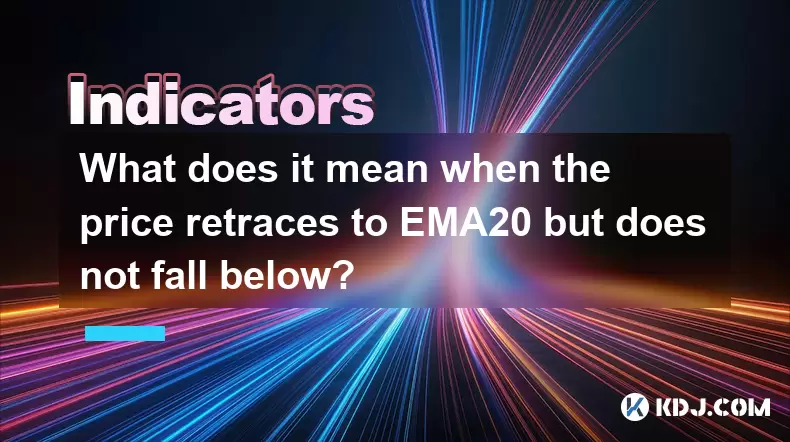
Understanding the EMA20 Indicator in Cryptocurrency Trading
The Exponential Moving Average (EMA) with a 20-period setting, commonly referred to as EMA20, is one of the most widely used technical indicators in cryptocurrency trading. It gives more weight to recent price data, making it more responsive to current price movements compared to simple moving averages. Traders use the EMA20 to identify potential support or resistance levels and to gauge the strength of ongoing trends.
In the context of Bitcoin, Ethereum, or any altcoin chart, the EMA20 line appears as a smooth curve that follows price action closely. When the price retraces toward this level but does not break below it, it often signals a continuation pattern rather than a reversal. This behavior is especially significant in trending markets where pullbacks are seen as opportunities to enter trades in the direction of the trend.
Key Point: The EMA20 acts as a dynamic support or resistance depending on the prevailing trend.
What Happens When Price Retraces to EMA20?
A retrace to EMA20 occurs when the price temporarily pulls back from a strong uptrend or downtrend and touches or hovers around the EMA20 line. In an uptrend, this retest often serves as a buying opportunity for traders who missed the initial move. In a downtrend, it can signal a chance to sell or short the asset again after a brief consolidation phase.
When the price approaches the EMA20 and bounces off it without breaking through, this indicates that the trend remains intact. It suggests that buyers (in an uptrend) or sellers (in a downtrend) are still in control. The EMA20 acts as a psychological level where market participants may place orders based on historical patterns.
- The price approaching EMA20 often triggers stop-loss orders near that level.
- Volume tends to increase during such retracements, confirming interest in the trend continuation.
- Candlestick patterns like bullish engulfing or hammer may form at the EMA20 during an uptrend, reinforcing the support role.
Important Note: Not all retracements to EMA20 result in trend continuation—context and confirmation are crucial.
Why Does the Price Not Fall Below EMA20?
If the price reaches the EMA20 but fails to close below it, this typically reflects strong underlying demand (in an uptrend) or supply (in a downtrend). In crypto markets, where volatility is high and sentiment shifts rapidly, such behavior can indicate institutional or algorithmic order flow supporting the trend.
This phenomenon often happens because large players place limit orders around key moving averages. As the price dips toward these levels, those orders get filled, pushing the price back in the original trend direction. Additionally, retail traders watching the same levels may also jump in, creating a self-fulfilling prophecy.
- Institutional orders cluster around key technical levels like EMA20.
- Traders interpret the EMA20 as a fair value reference point.
- Price rejection at EMA20 can be confirmed using candlestick patterns and volume analysis.
Critical Insight: A bounce off EMA20 without closing below it can serve as a low-risk entry point for trend-following strategies.
How to Trade When Price Retraces to EMA20 but Doesn't Break Below?
Trading this setup involves a combination of technical confirmation and risk management. Here's how to approach it step by step:
- Identify a clear trend using higher timeframes (e.g., 4-hour or daily charts).
- Wait for the price to retrace toward the EMA20 line without breaking below it.
- Look for confluence with other indicators such as RSI, MACD, or Fibonacci retracement levels.
- Observe candlestick formations at the EMA20 to confirm reversal or continuation signals.
- Place a buy/sell order just above/below the high/low of the candle that touched EMA20.
- Set a stop-loss slightly beyond the EMA20 line to manage risk effectively.
- Target profits using previous swing highs/lows or fixed risk-reward ratios (e.g., 1:2).
Pro Tip: Always wait for the candle to fully close before entering a trade to avoid false signals.
Common Misinterpretations and Pitfalls
Despite its popularity, the EMA20 is not foolproof. Some traders misinterpret a simple touch of the EMA20 as a valid trade setup without considering broader market conditions. For example, in ranging markets, the EMA20 may act as a false guide, leading to whipsaw losses.
Another common mistake is ignoring divergences between price and momentum indicators. Even if the price touches EMA20 and bounces, if the RSI shows bearish divergence, the bounce could be short-lived.
- Using EMA20 in isolation can lead to false entries.
- Failing to account for macro events or news can invalidate technical setups.
- Overtrading every retest of EMA20 without proper filtering leads to poor performance.
Caution: Always combine EMA20 with additional filters like volume, candlestick patterns, or multi-timeframe analysis.
FAQs
Q: Can EMA20 be used effectively in sideways markets?
A: While EMA20 can still be plotted, its effectiveness diminishes in non-trending environments. In sideways or choppy markets, prices frequently cross the EMA20, generating misleading signals. Traders should switch to range-bound strategies or oscillators like RSI or Stochastic in such cases.
Q: Is EMA20 more reliable on certain timeframes?
A: Yes, the EMA20 performs better on higher timeframes like 1-hour, 4-hour, or daily charts where noise and false moves are minimized. Lower timeframes (like 5-minute or 15-minute) tend to produce more erratic signals.
Q: Should I always trust a bounce from EMA20?
A: No, a bounce from EMA20 should always be confirmed with other tools such as candlestick patterns, volume spikes, or trendline breaks. Confirmation reduces the likelihood of entering a trade based on a false signal.
Q: How do I know if the price will continue after touching EMA20?
A: Watch for strong candlestick reversals, increased volume during the retest, and alignment with the overall trend. If the price quickly moves away from EMA20 after touching it, this is a good sign of trend continuation.
Disclaimer:info@kdj.com
The information provided is not trading advice. kdj.com does not assume any responsibility for any investments made based on the information provided in this article. Cryptocurrencies are highly volatile and it is highly recommended that you invest with caution after thorough research!
If you believe that the content used on this website infringes your copyright, please contact us immediately (info@kdj.com) and we will delete it promptly.
- Cryptocurrencies: Chart-Breaking Buys Beyond the Hype
- 2025-06-25 04:45:12
- Navigating Crypto Volatility: UNI Price, SUI Token, and the Rise of Unstaked
- 2025-06-25 04:45:12
- Bitcoin, Ethereum, and Geopolitical Tensions: Navigating the Iran-Israel Ceasefire
- 2025-06-25 05:05:13
- JPMorgan, Blockchain, and JPMD Token: A Quantum Leap for On-Chain Finance?
- 2025-06-25 05:05:13
- Bitcoin Desktop Wallets in 2025: A New Yorker's Take
- 2025-06-25 04:25:13
- Coinbase Stock Jumps: Decoding the Reasons Behind the Surge
- 2025-06-25 04:25:13
Related knowledge
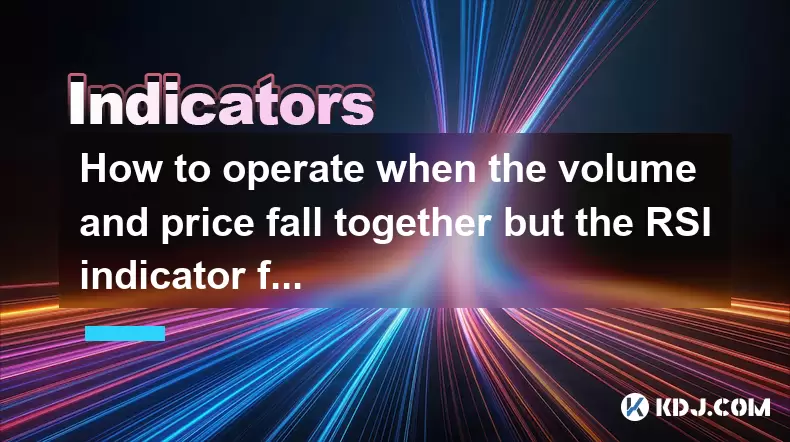
How to operate when the volume and price fall together but the RSI indicator forms a bottom divergence?
Jun 25,2025 at 04:29am
Understanding the Concept of RSI Bottom DivergenceWhen analyzing cryptocurrency price charts, traders often rely on technical indicators to spot potential reversals. One such signal is a bottom divergence in the Relative Strength Index (RSI). This occurs when the price makes a new low, but the RSI does not confirm that low and instead forms a higher low...
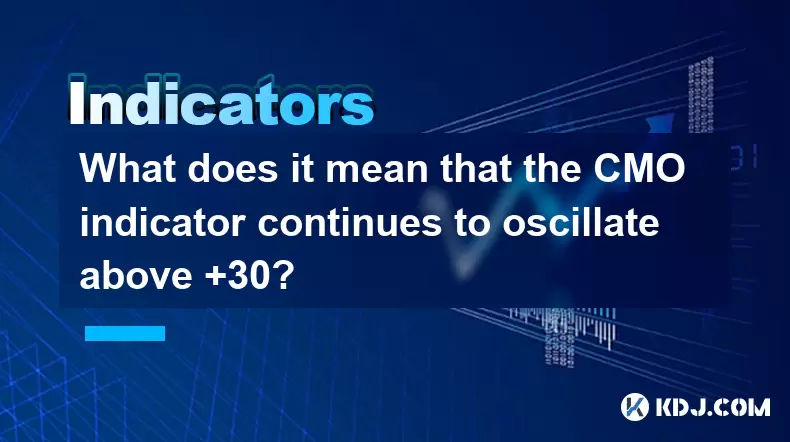
What does it mean that the CMO indicator continues to oscillate above +30?
Jun 25,2025 at 03:29am
Understanding the CMO IndicatorThe Chande Momentum Oscillator (CMO) is a technical analysis tool developed by Tushar Chande to measure momentum in financial markets. In cryptocurrency trading, the CMO helps traders identify overbought or oversold conditions and potential trend reversals. The oscillator ranges from -100 to +100, with values above zero in...

What does it mean that the ATR indicator suddenly doubles after hitting a new low this year?
Jun 24,2025 at 11:57pm
Understanding the ATR IndicatorThe Average True Range (ATR) is a technical analysis indicator used to measure market volatility. Developed by J. Welles Wilder, ATR calculates the average price range between a security’s high and low over a specific period—typically 14 periods. It does not indicate the direction of price movement but rather how volatile ...
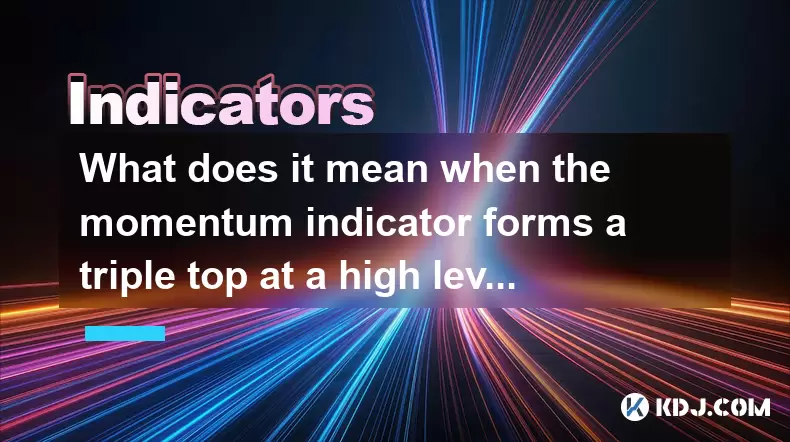
What does it mean when the momentum indicator forms a triple top at a high level?
Jun 25,2025 at 03:15am
Understanding the Momentum Indicator in Cryptocurrency TradingThe momentum indicator is a widely used technical analysis tool that measures the rate of change in price movements over a specified period. In cryptocurrency trading, where volatility is high and trends can reverse rapidly, this indicator helps traders identify potential trend reversals or c...
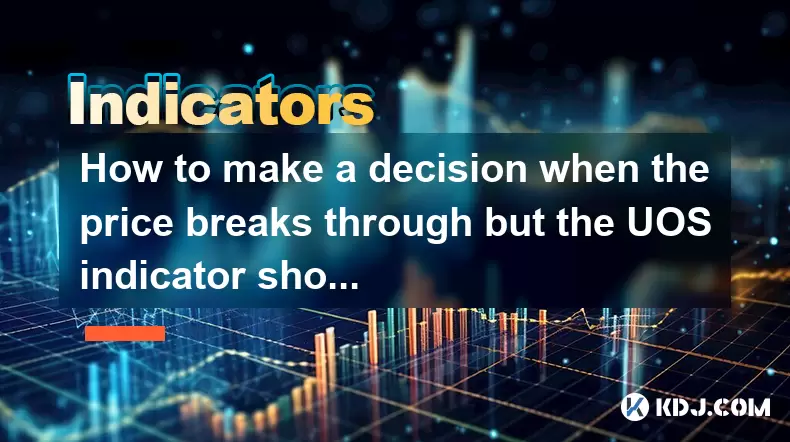
How to make a decision when the price breaks through but the UOS indicator shows a top divergence?
Jun 24,2025 at 11:42pm
Understanding the UOS Indicator and Price BreakthroughsThe Ultimate Oscillator (UOS) is a momentum oscillator that combines multiple timeframes to provide a more accurate picture of market momentum. When traders observe a price breakthrough — where the price moves above a key resistance level — but the UOS indicator shows a top divergence, it creates a ...

How to interpret the stochastic indicator being blunted for 5 consecutive days in the overbought area?
Jun 25,2025 at 03:00am
Understanding the Stochastic Indicator in Cryptocurrency TradingThe stochastic indicator is a momentum oscillator widely used in technical analysis within the cryptocurrency market. It helps traders identify overbought and oversold conditions by comparing a particular closing price of an asset to a range of its prices over a certain period. The standard...

How to operate when the volume and price fall together but the RSI indicator forms a bottom divergence?
Jun 25,2025 at 04:29am
Understanding the Concept of RSI Bottom DivergenceWhen analyzing cryptocurrency price charts, traders often rely on technical indicators to spot potential reversals. One such signal is a bottom divergence in the Relative Strength Index (RSI). This occurs when the price makes a new low, but the RSI does not confirm that low and instead forms a higher low...

What does it mean that the CMO indicator continues to oscillate above +30?
Jun 25,2025 at 03:29am
Understanding the CMO IndicatorThe Chande Momentum Oscillator (CMO) is a technical analysis tool developed by Tushar Chande to measure momentum in financial markets. In cryptocurrency trading, the CMO helps traders identify overbought or oversold conditions and potential trend reversals. The oscillator ranges from -100 to +100, with values above zero in...

What does it mean that the ATR indicator suddenly doubles after hitting a new low this year?
Jun 24,2025 at 11:57pm
Understanding the ATR IndicatorThe Average True Range (ATR) is a technical analysis indicator used to measure market volatility. Developed by J. Welles Wilder, ATR calculates the average price range between a security’s high and low over a specific period—typically 14 periods. It does not indicate the direction of price movement but rather how volatile ...

What does it mean when the momentum indicator forms a triple top at a high level?
Jun 25,2025 at 03:15am
Understanding the Momentum Indicator in Cryptocurrency TradingThe momentum indicator is a widely used technical analysis tool that measures the rate of change in price movements over a specified period. In cryptocurrency trading, where volatility is high and trends can reverse rapidly, this indicator helps traders identify potential trend reversals or c...

How to make a decision when the price breaks through but the UOS indicator shows a top divergence?
Jun 24,2025 at 11:42pm
Understanding the UOS Indicator and Price BreakthroughsThe Ultimate Oscillator (UOS) is a momentum oscillator that combines multiple timeframes to provide a more accurate picture of market momentum. When traders observe a price breakthrough — where the price moves above a key resistance level — but the UOS indicator shows a top divergence, it creates a ...

How to interpret the stochastic indicator being blunted for 5 consecutive days in the overbought area?
Jun 25,2025 at 03:00am
Understanding the Stochastic Indicator in Cryptocurrency TradingThe stochastic indicator is a momentum oscillator widely used in technical analysis within the cryptocurrency market. It helps traders identify overbought and oversold conditions by comparing a particular closing price of an asset to a range of its prices over a certain period. The standard...
See all articles
























































































